Key takeaways:
- Cryptocurrency wallets come in two main types: hot wallets for convenience and cold wallets for enhanced security, reflecting users’ priorities between accessibility and protection.
- Choosing the right wallet involves considering security features, usability, and compatibility with various cryptocurrencies to effectively manage assets.
- For secure wallet usage, enabling two-factor authentication, safeguarding recovery phrases, and thoroughly vetting wallet apps are essential practices.
- Future trends in online wallets include integration with decentralized finance (DeFi), improved cross-platform compatibility, and a focus on enhanced user experience for broader adoption.
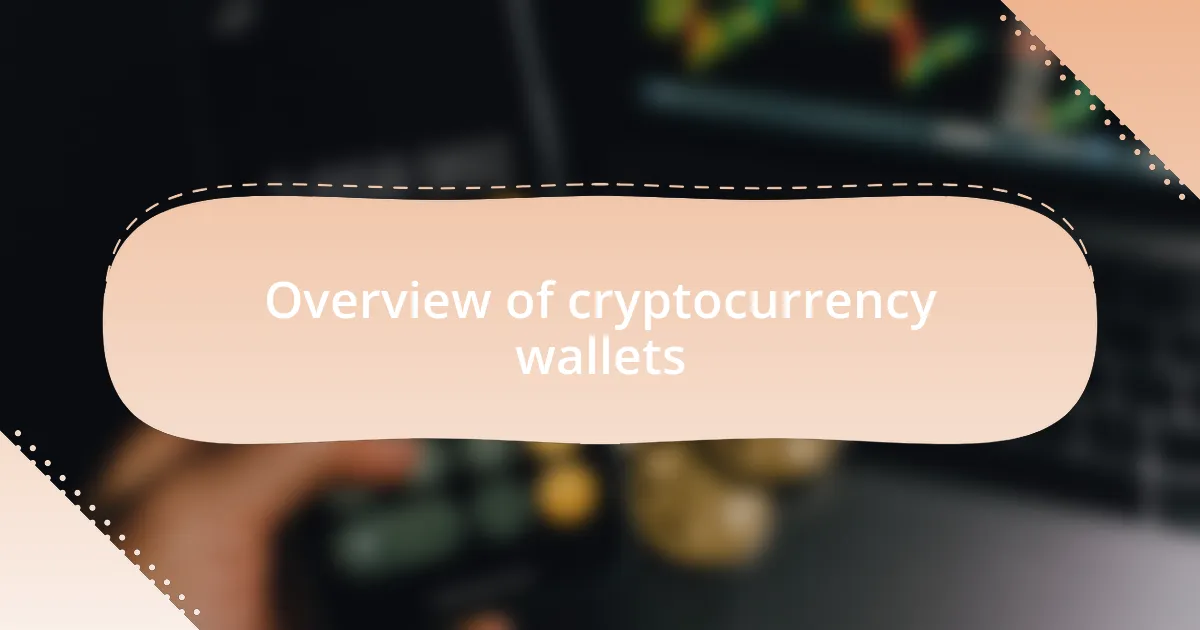
Overview of cryptocurrency wallets
Cryptocurrency wallets are essential tools for anyone serious about digital currencies. Personally, I remember the first time I set up my wallet; it felt almost like opening a bank account for the first time. That blend of excitement and nervousness is something any crypto enthusiast can relate to, isn’t it?
There are several types of wallets—hot wallets that connect to the internet and cold wallets that store your assets offline. Each has its own pros and cons. I gravitated towards hot wallets for their ease of use, especially for trading purposes, but I also felt a growing anxiety about their security risks. Have you ever considered the balance between convenience and safety?
The choice of wallet often reflects a user’s approach to cryptocurrency. I’ve seen friends who opt for cold wallets because they prioritize security, treating their investments like treasured collectibles. It’s fascinating how, regardless of our choices, the underlying principle remains the same: we all seek a way to manage and protect our digital assets in this ever-evolving space.
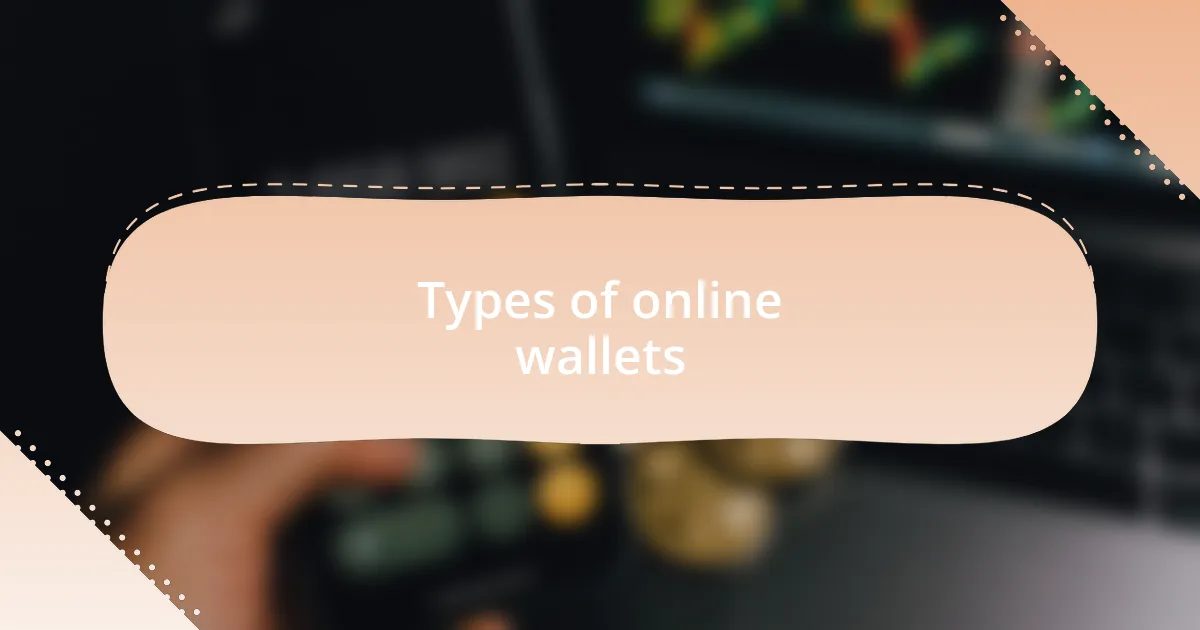
Types of online wallets
When I think about online wallets, the first distinction that comes to mind is between custodial and non-custodial wallets. Custodial wallets are where a third party, like an exchange, manages the private keys for you. I remember feeling a sense of relief when I first used a custodial wallet; it took some of the technical pressure off my shoulders. However, I quickly realized that trusting someone else with my keys felt like handing my house keys to a stranger—exciting but nerve-wracking.
On the other hand, non-custodial wallets put you in complete control of your private keys. The first time I set up a non-custodial wallet, it was empowering; I was the one calling the shots. Yet, that empowerment came paired with responsibility—if I lost my recovery phrase, it was game over. Have you ever had that sinking feeling of realizing the weight of your choices?
Lastly, mobile wallets have also played a significant role in my crypto journey. They’re incredibly convenient for day-to-day transactions, allowing me to make quick purchases on the go. I recall using my mobile wallet to buy a coffee, pretending I was part of this digital revolution. However, the downside is that they can be less secure. I often ask myself, is the convenience worth the potential risk? Each type of wallet has its place, depending on how I want to engage with my digital assets.
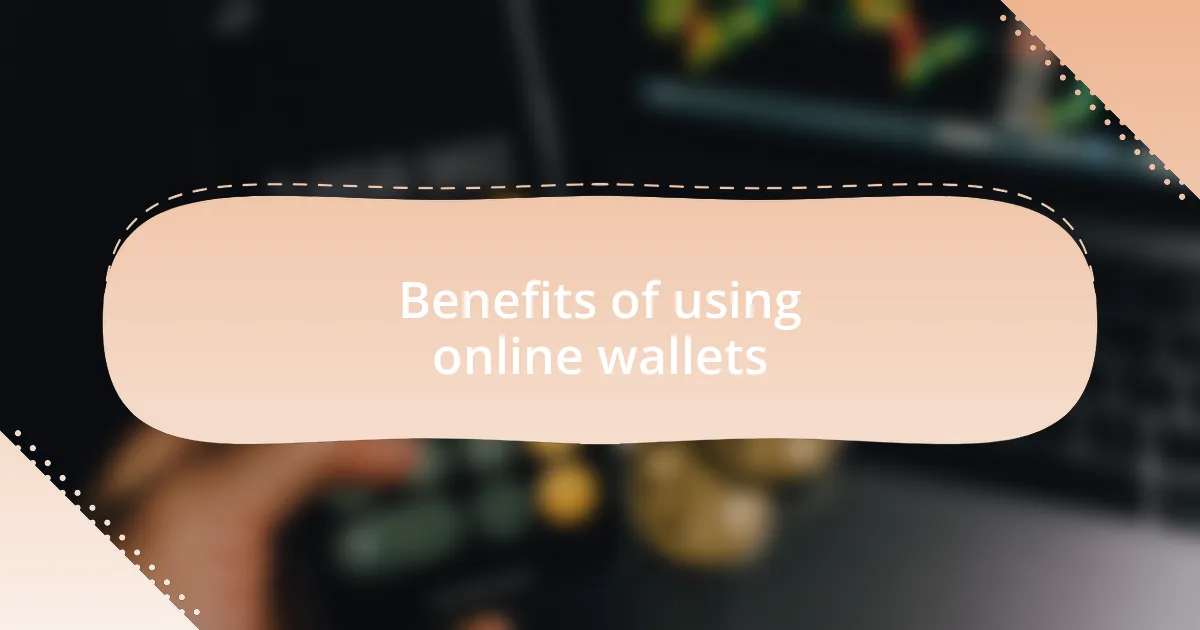
Benefits of using online wallets
Using online wallets offers incredible convenience for managing cryptocurrencies. I still remember the first time I made a transaction while sitting on my couch—it felt like magic. I could send or receive digital currency instantly, without the hassle of bank hours or waiting for approvals. Isn’t it fascinating how technology can simplify things so dramatically?
Security, often a concern in the crypto world, can also be enhanced through online wallets. While I trust a third party to safeguard my assets, I also appreciate the added features like two-factor authentication. These layers of protection make me feel safer as I navigate this complex landscape. Have you ever invested in something only to feel anxious about its safety? Having that peace of mind can make a world of difference.
Moreover, the accessibility of online wallets is a game-changer. I vividly recall when I traveled abroad and needed to exchange money. With my online wallet, I could easily convert my funds into local currency without high fees. The freedom to access my assets from anywhere at any time is empowering. Do you also value that level of control in your financial transactions? I sure do—it transforms the way I engage with my finances.
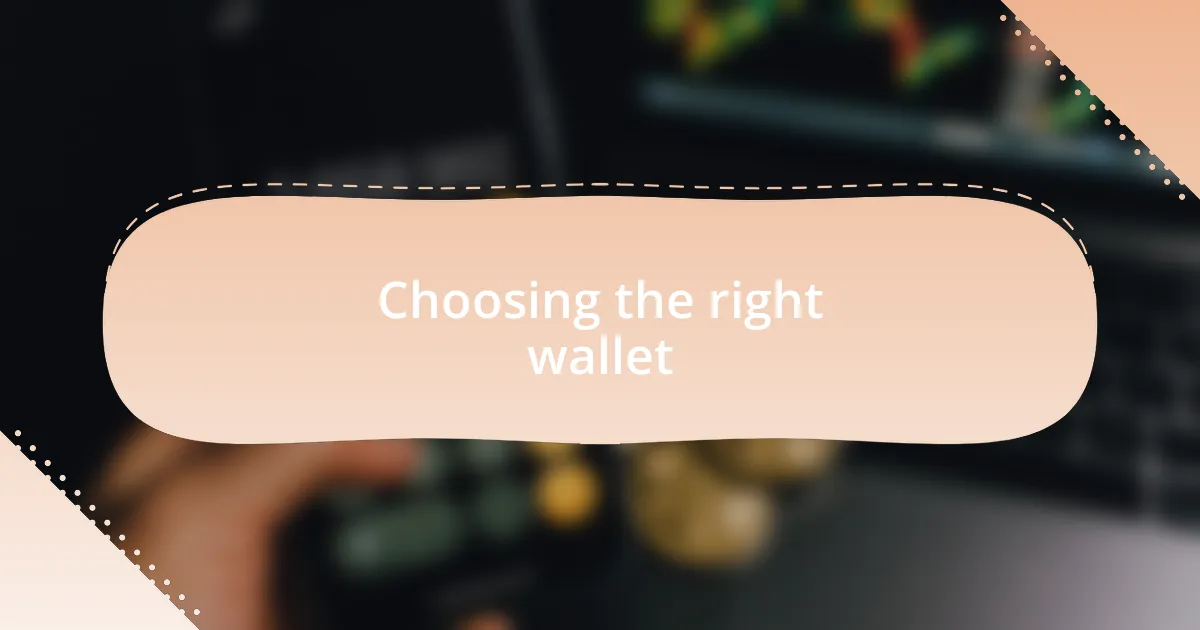
Choosing the right wallet
When choosing the right online wallet, I often consider the wallet’s security features first. I recall a time when I was weighing my options, and I discovered how some wallets offer biometric logins. The thought of using my fingerprint added an extra layer of security that really appealed to me. Have you ever thought about how vital it is for your wallet to guard your investments effectively?
Usability is another crucial factor. I remember switching wallets because the first one I tried felt complicated and clunky. After exploring a more user-friendly option, I found transactions smoother and much less stressful. Have you ever experienced that frustration with a service that feels overly complicated? Simplifying the user experience can profoundly impact how I engage with my cryptocurrencies.
Lastly, I believe it’s essential to consider compatibility with various currencies and services. I once chose a wallet that only supported a limited range of assets, which quickly became a headache as I tried to diversify my investments. I’ve learned that having a wallet that can accommodate multiple cryptocurrencies not only saves time but also makes managing my portfolio feel much more cohesive. Isn’t it reassuring to have everything in one place?
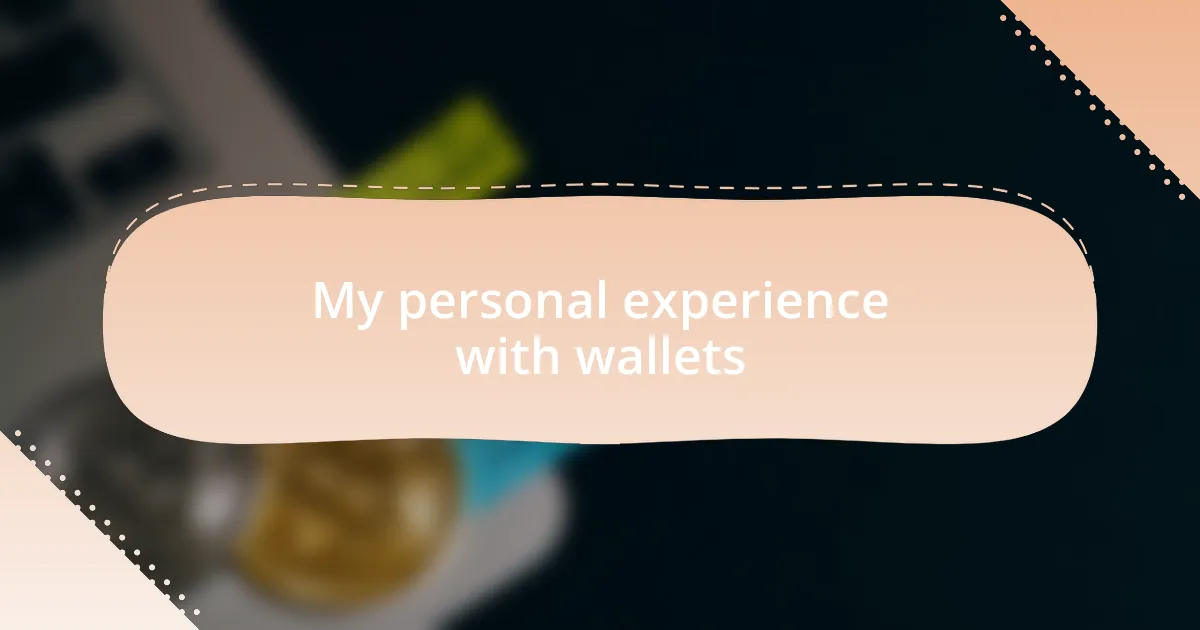
My personal experience with wallets
When I first ventured into the world of online wallets, I was excited but a bit apprehensive. I remember the early days of setting up my wallet—there was this mix of anticipation and fear of making a mistake. Typing in my recovery phrase felt monumental, like I was locking away a digital treasure. Have you ever felt that rush when you hit ‘confirm’ for the first time?
As I became more familiar with online wallets, I found that certain features really enhanced my overall experience. For instance, I particularly enjoyed the ability to track my transactions in real-time. I recall a moment when I saw the value of a cryptocurrency spike while I was viewing my wallet. It was exhilarating! Isn’t it fascinating to witness your investments grow right before your eyes?
However, not every experience was perfect. I faced a situation where my wallet had a glitch during a critical transaction. I felt a wave of panic wash over me as I worried about losing my assets. That incident taught me to always have backups and to be cautious with every transaction. Have you ever faced a technical hiccup that made you rethink your choices? Those moments can be stressful but also invaluable learning experiences in the cryptocurrency journey.
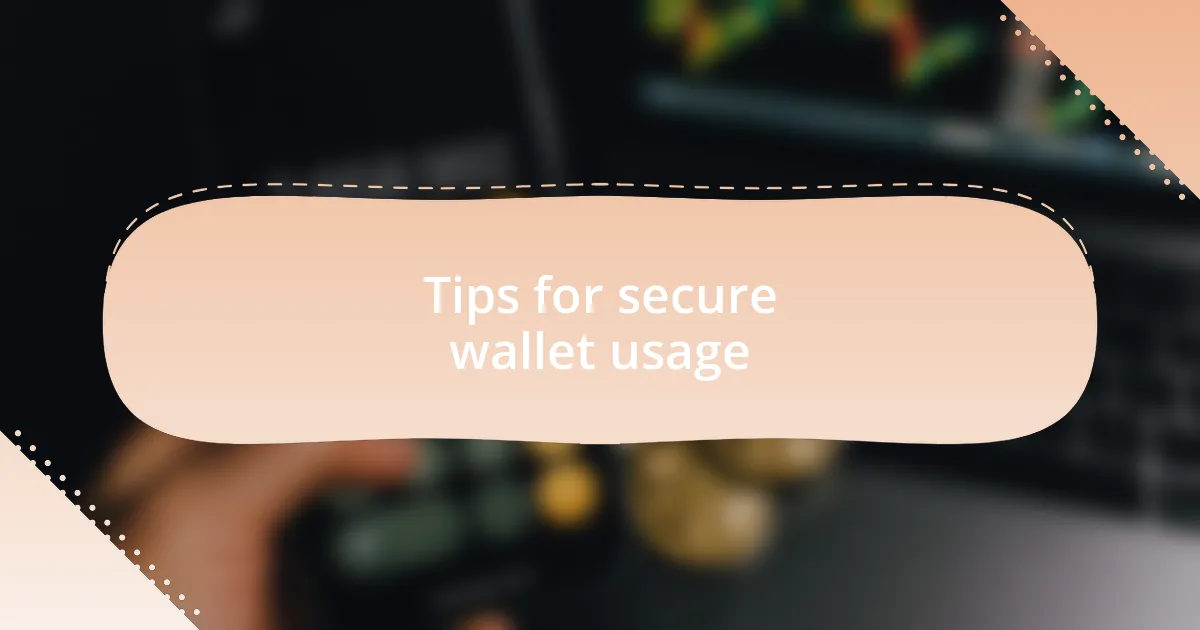
Tips for secure wallet usage
When it comes to securing your online wallet, one of the first tips I can share is to enable two-factor authentication (2FA). I distinctly remember the sense of relief I felt when I added this safeguard after hearing about a friend’s unfortunate experience with a hacked account. It’s nearly a no-brainer—why wouldn’t you want an extra layer of protection for something as precious as your digital assets?
Another crucial aspect I’ve learned is to keep your recovery phrase safe and offline. After mistakenly sharing mine with a friend during a casual chat, I quickly realized how careless that was. I couldn’t shake off the anxiety; what if someone overheard? Now, I store my recovery phrase in a secure, forgotten drawer at home—far away from prying eyes. Have you considered how easily information can slip out if we’re not vigilant?
Lastly, I urge you to be cautious about the wallet apps you choose. There was a time when I downloaded a well-reviewed app, only to find it was a scam that ended up compromising my data. This disappointing experience made me double-check reviews and thoroughly research any wallet before trusting it. It begs the question: are you doing enough to vet the tools you’re using to manage your investments?
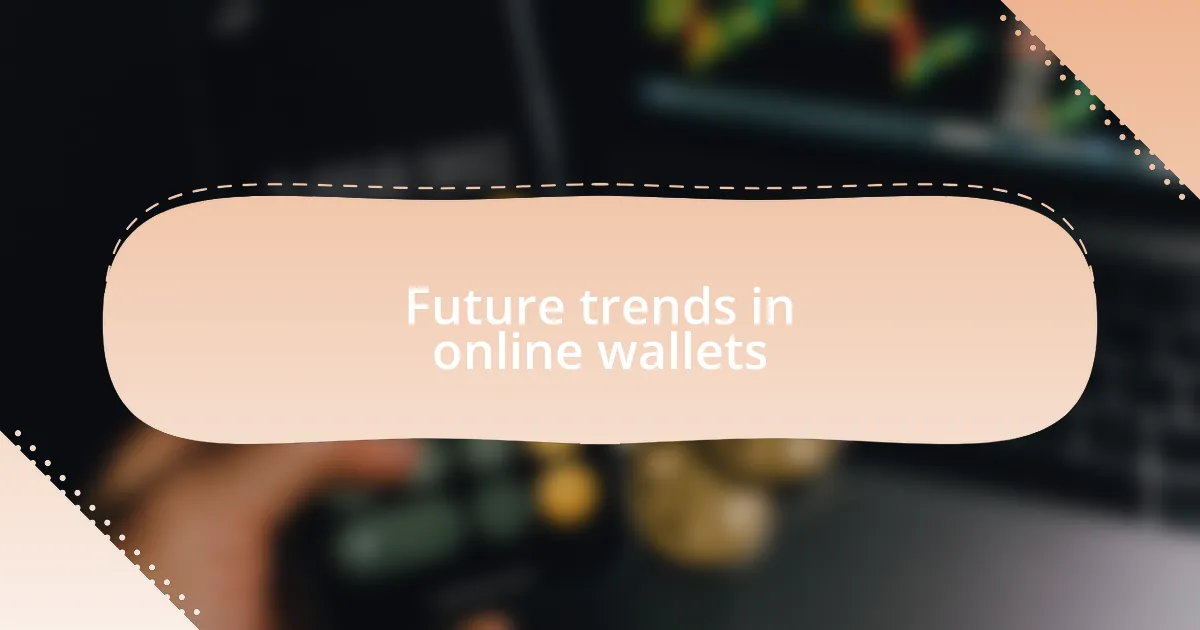
Future trends in online wallets
As I look towards the future of online wallets, I can’t help but think about the rise of decentralized finance (DeFi) integration. I remember the first time I was able to lend my assets through a wallet, which felt groundbreaking. The convenience and potential returns made me realize that merging wallets with DeFi could open a treasure trove of possibilities for users like us. Have you considered how automated processes could streamline our financial interactions?
Moreover, I’m noticing a trend toward enhanced cross-platform compatibility. When I realized I could access my wallet seamlessly on both my phone and desktop, it made managing my assets feel like second nature. This kind of flexibility is essential as more people adopt digital currencies in their daily lives. Can you imagine managing all your finances effortlessly across different devices?
Lastly, the focus on user experience is becoming a major priority. I recall my own frustration navigating a cluttered app interface that made basic tasks feel overwhelming. Future wallets are likely to prioritize intuitive designs, ensuring that even newcomers feel at home. Think about it—if we want to see wider adoption of cryptocurrencies, doesn’t it make sense for wallets to cater to everyone, regardless of their tech-savviness?